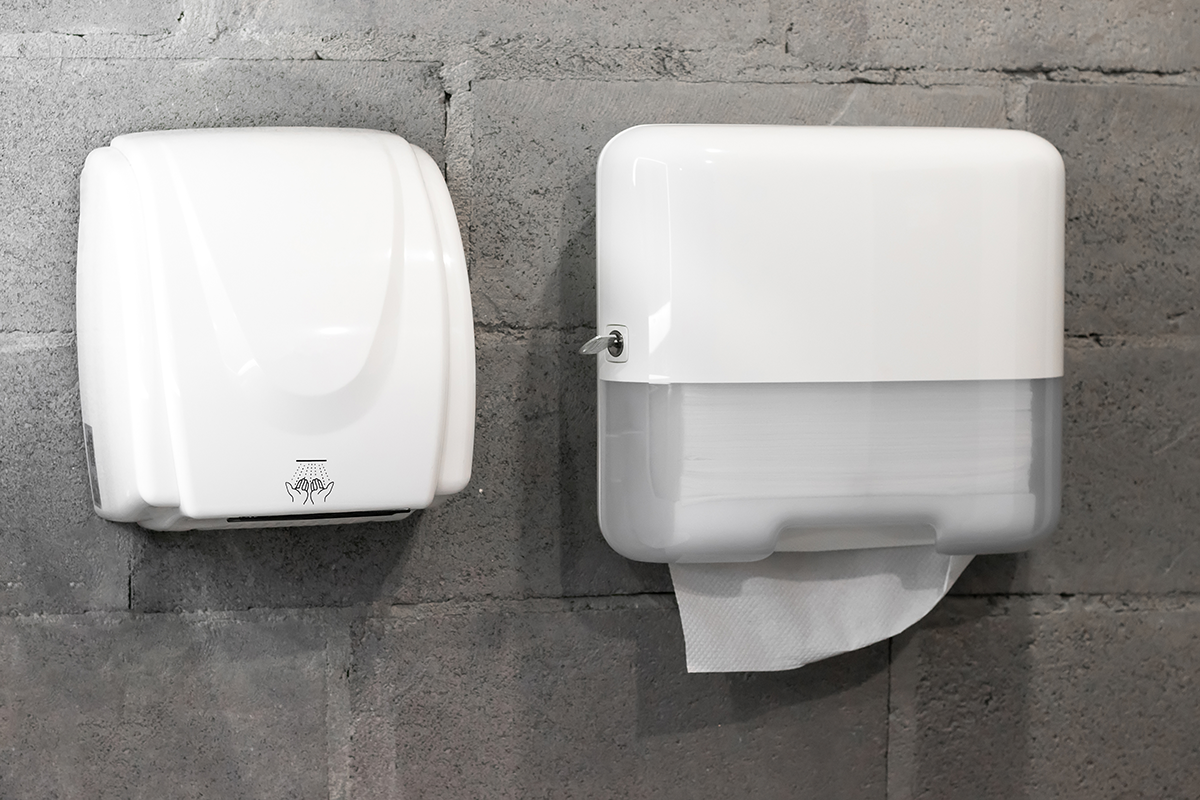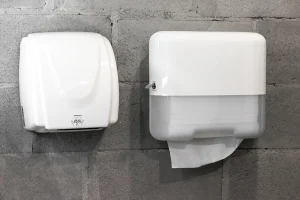When it comes to hand hygiene in commercial facilities, the choices you make about drying and sanitizing can significantly impact both user experience and health outcomes. Here’s what facility managers should consider when selecting hand hygiene solutions.
Air Dryers vs. Paper Towels: The 70/30 Split
Currently, paper towels are winning the popularity contest, with users choosing them over air dryers at a 70/30 ratio. This preference isn’t just about personal choice – it’s often driven by practical limitations.
Many older facilities simply lack the electrical infrastructure needed for modern air dryers.
For new construction and remodels, there’s a growing trend toward air dryers as builders incorporate the necessary electrical work. However, speed and effectiveness are crucial – slow or weak air dryers actually discourage proper hand hygiene, as people may skip washing altogether rather than wait.
The health debate remains contentious. While some experts cite studies showing air dryers can blow germs into the air, the CDC takes a more neutral stance, stating there isn’t enough scientific evidence to definitively prove one method is more effective at reducing germs than the other.
Smart Paper Towel Choices
For facilities sticking with paper towels, the key is choosing the right dispenser system:
- Stub-roll systems offer the best sustainability benefits
- High-capacity dispensers work best for high-traffic areas
- Manual no-touch systems provide universal accessibility
- Avoid c-fold towels – they score poorly on user experience, maintenance frequency, and cost- effectiveness
Strategic Hand Sanitizer Placement
While handwashing with soap and water remains the gold standard for infection prevention, hand sanitizers serve as crucial backup when sinks aren’t available. Smart placement includes:
- Facility entrances
- Near elevators
- Outside restrooms
- Nursing stations and classrooms without sinks
The CDC recommends sanitizers with at least 60% alcohol content, though they won’t be effective against all germs like Cryptosporidium, norovirus, and C. difficile.
Foam Beats Gel
When choosing sanitizer types, foam consistently outperforms gel options. It’s cleaner, more cost- effective, distributes more easily, and dries faster – making it more appealing to users. Wall-mounted dispensers are preferred over bottles or pumps in public settings to avoid spills and maintenance issues.
Don’t Forget the Signage
While most people know how to wash their hands, signage serves important regulatory compliance purposes and acts as helpful reminders. Effective signage should emphasize the 20-second scrubbing rule and can include illustrations to overcome language barriers and engage younger users.
The Bottom Line
Making hand hygiene convenient and accessible dramatically improves health and safety outcomes. Whether you choose air dryers or paper towels, foam sanitizers or gel, the key is selecting solutions that encourage consistent use while meeting your facility’s specific needs and constraints.
Summary based on reporting by Caryn Jones for CleanLink





